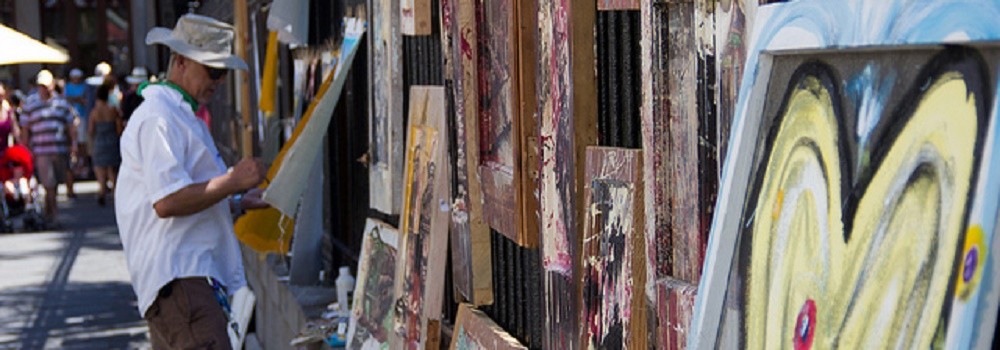The Strategy of a Well-Fed Artist
How can an artist make a living? By thinking like an entrepreneur.
By Sarah Hartwick, Staff Writer
When Ann Rea was beginning her career as a painter, she had a conversation with her mentor that would inspire the rest of her career. “He encouraged me and he said, I think you should pursue painting full time. I mean, my heart leapt. I felt so encouraged. And my question […] was, ‘now, how am I going to make a living?’”
Rea’s mentor was American art icon Wayne Thiebaud. At the time, his work was selling for a million dollars on the secondary market. A retrospective of his life’s work was touring the United States.
His response? “I don’t know. I’m not a businessman.”
“This disconnect, this brain freeze that artists have—including someone as successful as Wayne Thiebaud—became so clear to me,” she says of that conversation. “I’d had some experience developing effective marketing strategies when I was an industrial designer. And I thought, no, there’s got to be a way to maintain your creative integrity and serve people so that you can get paid.”
Today, Rea has built an enterprise around her art, not only successfully selling her work, but consulting and coaching other artists on strategy and marketing as well. She writes about the need for business sense in the art community on her website, Artists Who THRIVE, and has created an eight-week business course for artists. Her first book, Selling Art without Selling Out, is soon to be published.
Making a profit through a small business can be difficult, especially while creating a product and self-marketing. The notion of the starving artist is an oft-romanticized version of this struggle, and one Rea says must change.
For artist Ravi Shukla, receiving funding for an art project has been a major stepping-stone in his art career. Shukla has spent the past summer with a group of fellow artists on the shore of the Hudson Bay, in the town of Churchill, Manitoba, working on a multi-disciplinary project called ‘Becoming Beluga.’
The project is funded by grants and donations, allowing the group of artists to stay up in Churchill and focus on the project for the duration of the summer. But living by his art hasn’t always been feasible for Shukla.
“It’s cool when you have a project come together where there’s money involved,” he says. “The art didn’t always pay the bills. It wasn’t consistent.”
One of the things new artists find to be the most difficult, says Rea, is dropping the idea of being a “starving artist” and embracing that of making a living through their art.
“The general orientation of art professors and art students is around this scarcity-based model, which is completely broken,” she says. “The traditional models are crumbling. And no alternative has presented itself.”
According to Rea, part of the problem is that most art schools don’t stress the business side of living as an artist, causing many artists to perpetuate the “starving artist” stereotype.
“In my experience, art schools do not have the inclination, nor do they have the skillset to teach business skills,” she says. “They don’t come from an entrepreneurial perspective.”
Shukla says that although he wasn’t taught marketing in art school, many young artists are entering the market with an idea that they have to go beyond the production of art to make a living. “They are very much aware that it’s not just talent that gets you somewhere now,” he says.
Art consultant and advisor Alan Bamberger writes on his website, artbusiness.com, that it’s important for an artist to be able to pinpoint what is unique and valuable in their art, and to communicate those qualities to potential dealers or buyers.































Share the post "The Strategy of a Well-Fed Artist"